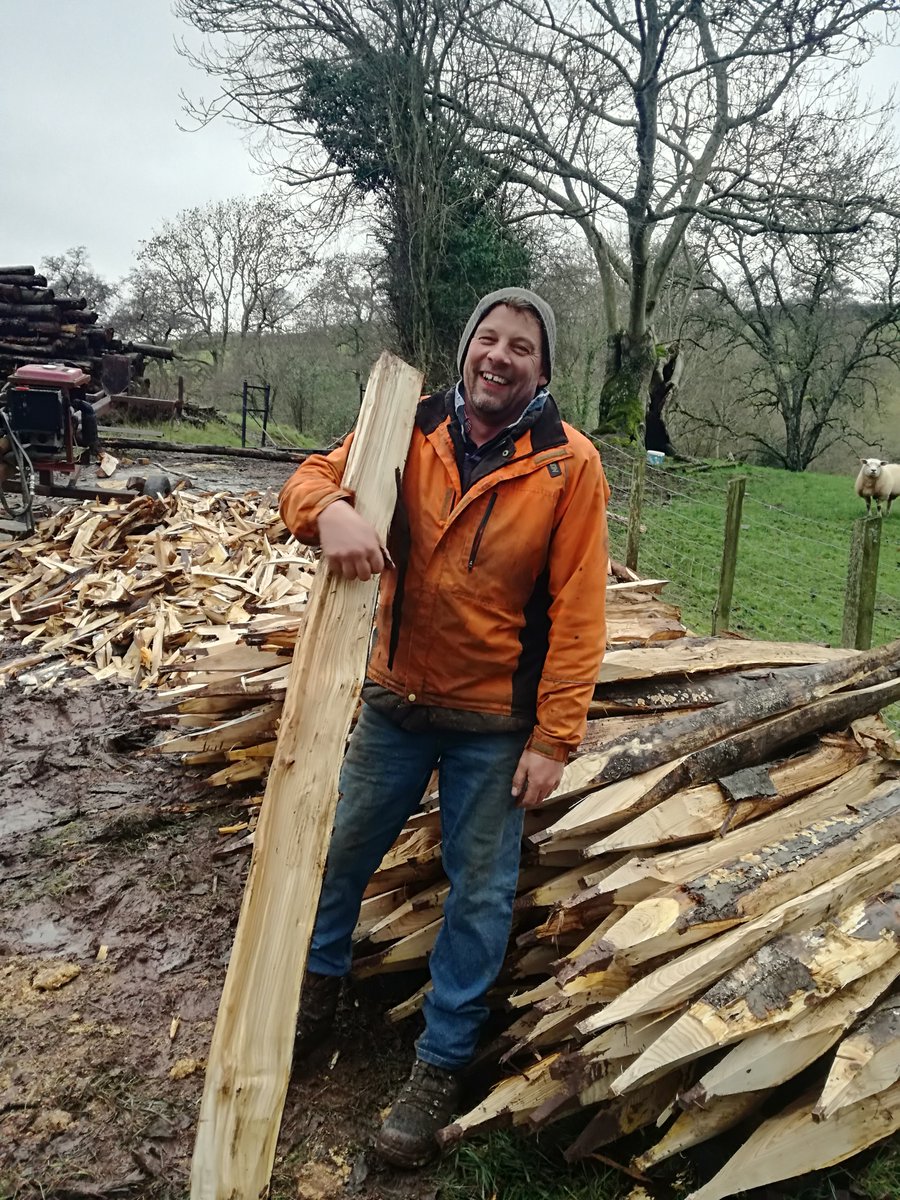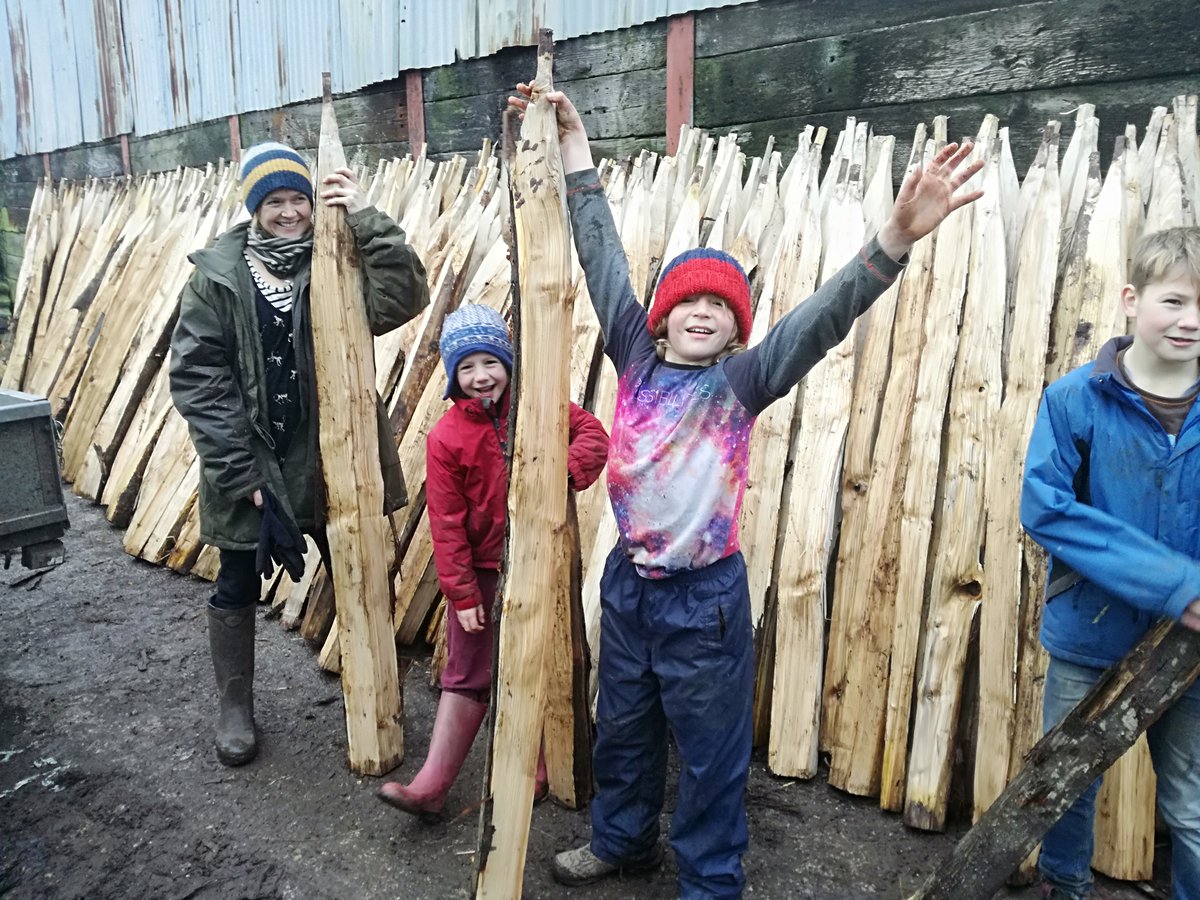Thunderbirds are go!!
We are finally getting started on the Bryn Arw tree plant. Over the next 3 months we will plant 120,000 mixed native hardwoods on our Welsh hillside. Apart from the fact its mid-winter, we have to get c.140 tonnes of young trees, canes and fencing... 1/14
We are finally getting started on the Bryn Arw tree plant. Over the next 3 months we will plant 120,000 mixed native hardwoods on our Welsh hillside. Apart from the fact its mid-winter, we have to get c.140 tonnes of young trees, canes and fencing... 1/14
..materials to the top of the hill, erect a 3.5km fence and do all this on a 30-degree slope, without damaging or compacting the ground… it should be a piece of cake. We didn’t plan or expect this, but we had to wait until late December before we had news that we had, at last...
... cleared the final Welsh Government bureaucratic and regulatory hurdles. I also need to somehow, magically, manage the cash flow as the GWC grant is paid retrospectively. We also plan to do a few experiments with our planting, of which more at a later date.
Just for fun, to acknowledge all the people involved and to mark this unprecedented tree plant, I am going to try to do a blog all about it. I hope it might also be of some benefit to others planning to do similar, so they can see where we went wrong!
Blog 1.
Why are we using sweet chestnut for the fencing?
In order to exclude sheep from the plant area, we have to erect a fence on the hill, which is common land. It is 3.5km long and will be removed in 12 years, when the trees are established. We are using sweet chestnut...
Why are we using sweet chestnut for the fencing?
In order to exclude sheep from the plant area, we have to erect a fence on the hill, which is common land. It is 3.5km long and will be removed in 12 years, when the trees are established. We are using sweet chestnut...
... stakes and posts because they are really durable, sustainable, local and beautiful!
Durability.
Unlike conventional softwood stakes, sweet chestnut (Castanea sativa) does not rot, or at least rots very slowly, so you don’t need chemical preservatives.
Durability.
Unlike conventional softwood stakes, sweet chestnut (Castanea sativa) does not rot, or at least rots very slowly, so you don’t need chemical preservatives.
It is traditionally used in fencing, not only because it is strong and it cleaves well, although these are tremendous attributes, but also because it has relatively little sapwood and the heartwood is full of tannins. The tannins act as a natural preservative making the wood...
... highly resistant to rotting. Even at ground level where moisture rising from the soil meets oxygen and warmth from above the ground, creating perfect conditions for microbes and fungi, these tannins resist the onslaught of decay for decades. In my experience, chemically
... preserved softwood stakes frequently rot off at ground level in as little as 3-5 years.
Chestnut Coppice is 100% sustainable:
Coppiced or cut stools regrow vigorously, taking up more carbon dioxide than a newly planted tree; if done well, these trees can be harvested on...
Chestnut Coppice is 100% sustainable:
Coppiced or cut stools regrow vigorously, taking up more carbon dioxide than a newly planted tree; if done well, these trees can be harvested on...
...a 12-18 year rotation, for years to come. The oldest coppices in the UK have been yielding fencing materials for 800 years with no decrease in productivity.
Think global act local:
The materials we are using have all been locally grown, cut and harvested from well-managed...
Think global act local:
The materials we are using have all been locally grown, cut and harvested from well-managed...
... local coppice and then processed, again locally, by Ed Rusling of Powells Forest and Garden, Wormbridge (pictured). The local aspect is vital, not just because of the carbon cost of transporting the stuff but also for local jobs, jobs with soul!
As we currently import 2.5 times more timber than we harvest domestically, it makes good sense to try to use home grown timber.
Chestnut coppice woodland is also beautiful, slows surface water runoff, produces food in the form of nuts and is pretty good for biodiversity...
Chestnut coppice woodland is also beautiful, slows surface water runoff, produces food in the form of nuts and is pretty good for biodiversity...
... especially when coppiced. Some argue the tree is not native, however, the benefits to biodiversity are often proportional to how long a species has been present; Chestnut is thought to have been introduced by the Romans and belongs to the same family as oak and beech.

 Read on Twitter
Read on Twitter



